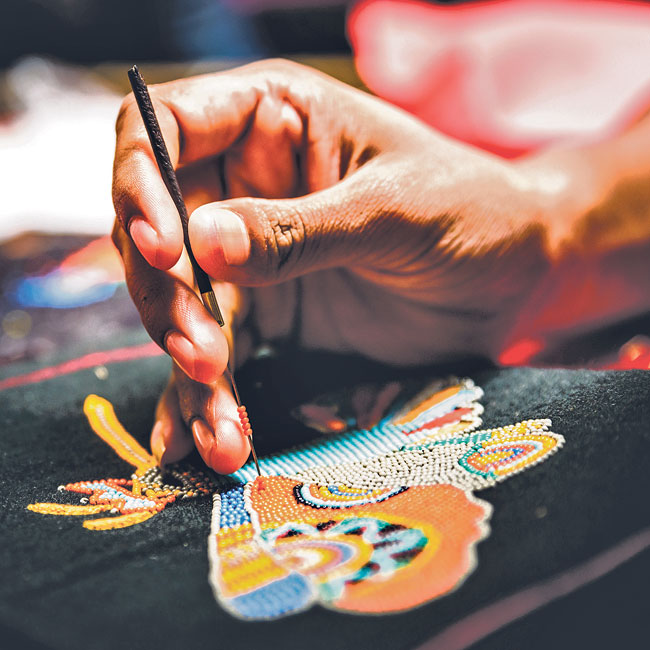Pia is the second company created by Marie Ange Sylvain-Holmgren with the fountainhead brand being Image Ark. Holmgren, born in Haiti and brought up in various parts of the world, belongs to a family of diplomats, which made it possible for her to travel globally through her life. She worked with the UN as a filmmaker and communications person for 30 years and finally settled down in Nepal in 2013. Why Nepal? She developed a strange liking for Nepal during her years in travel where, she claims, “My friends tended to be Nepali!”

Image Ark, earlier registered in Kenya as an off-shore company, was re-registered in Nepal, as a local private limited. Some of the most successful projects undertaken by Image Ark include art work that is on permanent display at the UN office in Bangkok which is the third largest UN office in the world, and fabricating, from scratch, the visual identity of Labim Mall in Patan -- from the logo to the parking lot.
Isolation of indigenous groups

The workplace rented for Image Ark had two extra floors that allowed Holmgren to accommodate more of her passions: exhibiting contemporary artwork in an area that was dominated by traditional art forms, and creating Pia.
Pia is a multicultural brand that owes inspiration to the culture and craftsmanship of Nepali artisans, and handcrafted luxury pieces in home decor and accessories line, for instance, lamps and clutches. The brand is of deep emotional significance to Holmgren who uses Pia products to communicate her truest belief: harmony in diversity.
Holmgren, having lived her life as a nomad, sees the world as her home, and therefore, a comfort zone. She advocates the idea that we are one and in our togetherness only are we truly strong. The logo of Pia is a hummingbird with butterfly wings where the former symbolizes strength and the latter, elegance and beauty. In this fashion, we see how Pia combines two otherwise unrelated ideas or objects creating not just a contemporary artsy amalgamation but also a clever intellectual juxtaposition.
The idea to create a platform and brand like Pia struck Holmgren during the peak time of electricity shortage and load-shedding in Nepal. “We don’t have electricity so let’s do it by hand,” was her thought.
Ever since its conception, Pia has been generating art without the help of machinery. No two pieces of work are replaceable so as to reiterate the thought that people sat down to make this happen; the pieces are as unique as the people who made them. Pia’s collaboration with the local artisans and craftsmen places the value of their skills on a higher pedestal. With their art pieces being sold as luxury items, they earn enough money to prevent the usual repulsion their children feel for the profession. The children see the potential of a previously endangered profession and don’t feel the urgent need to fly abroad seeking employment.
‘Bottles to Beads’ is a successful project and initiative taken up by Holmgren. A professional from Ghana was invited to train a few village women the art of creating beads from broken or discarded glass bottles. The trainees became trainers when these women went on to create a clan of more women who morphed bottles to beads. This project helps village women gain employment while solving the environmental issue of pollution via glass bottles. Beads are common yet beautiful. They symbolize the evolution of civilization where once they were used as currency and now continue to be used in ornaments, etc.
Pia has participated in art fairs in places like Paris and Germany. While the products are available online for display they are up for sale only in Pia’s exclusive studio in Image Ark in Patan Durbar, One Tree Shop in Durbarmarg and Timro in Jhamsikhel, apart from art fairs and markets. Pia, like many others in the industry, faces the challenge of gaining international clients because of the bleak state of e-commerce in Nepal.
When asked to contain the meaning of her life, and that of Pia, in a word, Holmgren smiles and says, “Metissage.”



































